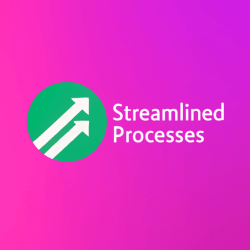For Real-Time Marketing Automation, see our main page here.
What Is Real-Time Marketing Automation?
Real-Time Marketing Automation is the process of delivering personalized, perfectly-timed content to customers based on their behavior, data, and engagement. Unlike traditional campaigns, real-time methods adjust immediately, shaping customer experiences as they unfold.
For example, when a user abandons a shopping cart, an automated system can send a personalized email within minutes. If a customer browses a product repeatedly, dynamic ads can appear instantly across platforms. This fast, data-driven response drives both conversions and brand loyalty.
Why Real-Time Marketing Automation Matters Today
Today’s digital customers expect speed. They won’t wait days for a marketing response. They’ll likely move on to a competitor. Real-Time Marketing Automation makes businesses agile, helping brands keep up with, and even predict, customer behavior.
Moreover, automation saves significant time and costs by reducing manual processes. Marketers can focus on strategy while machines handle execution. As a result, campaigns become more relevant, timely, and scalable.
Key Benefits of Real-Time Marketing Automation
- Enhanced personalization: Automatically deliver the right message at the right time.
- Higher conversion rates: Engage customers while they are most interested.
- Streamlined operations: Reduce manual tasks and automate workflows.
- Better customer retention: Keep your brand top-of-mind with timely touchpoints.
- Data-driven decisions: Adjust campaigns instantly based on real-time analytics.
How Real-Time Marketing Automation Works
Real-Time Marketing Automation relies on a combination of data tracking, behavioral analysis, and programmable triggers. It begins with collecting user data across digital touchpoints—web activity, email interactions, mobile behavior, and more.
This data feeds into intelligent platforms that identify patterns. Based on pre-set rules or AI algorithms, the system launches automated actions—like sending messages, segmenting users, or displaying tailored content.
For instance, browsing behavior on an e-commerce site may trigger a chatbot popup. Later, if the customer revisits, a tailored discount code may follow. These interactions feel natural but are fully automated behind the scenes.
Popular Use Cases
Real-Time Marketing Automation spans industries and goals. Below are key scenarios where it delivers strong outcomes:
- E-commerce: Cart abandonment emails and personalized product recommendations increase purchase rates.
- B2B lead nurture: Automated follow-up messages based on webinar attendance or site visits qualify leads faster.
- Retail loyalty: Sending offers right after a store visit keeps customers engaged.
- Media and content platforms: Recommending new content based on real-time viewing behavior keeps users hooked.
Tools That Power Marketing Automation in Real Time
Several platforms support real-time journeys. Some include customer relationship management (CRM) systems, email marketing tools, and AI-powered content engines. Popular names include:
- HubSpot
- Salesforce Marketing Cloud
- ActiveCampaign
- Klaviyo
- Adobe Experience Cloud
Each tool offers unique features, but the best choice depends on your goals and existing tech stack. For small to mid-sized businesses, lightweight tools like Klaviyo or ActiveCampaign offer swift implementation. For enterprise applications, Salesforce and Adobe provide more complex, AI-driven pathways.
Challenges of Real-Time Marketing Automation
While powerful, real-time approaches also present hurdles. These include:
- Data privacy: AI tools handle user data, so compliance with laws like GDPR is critical.
- Content scaling: Creating enough timely, relevant content for various audience segments takes planning.
- Integration difficulties: Connecting platforms like CRMs and analytics tools can require custom setups.
However, modern tools are working to ease these challenges. For example, some platforms now include consent management and low-code integrations.
Best Practices for Successful Real-Time Marketing Automation
To drive true value, marketing teams need more than tools—they need a thoughtful strategy. Here’s how to build it:
- Understand the customer journey: Map out key points where real-time communication matters most.
- Start with clear goals: Decide what you want to achieve: lead generation, retention, sales, or engagement.
- Set realistic triggers: Don’t over-automate. Prioritize moments that spark buyer decision-making.
- Create modular content: Break content into pieces that can be reused across channels dynamically.
- Test and evolve: Use A/B testing and real-time analytics to refine automated responses.
Case Study: A Retail Brand Doubles Conversions
A U.S. sports apparel company shifted from batch email newsletters to Real-Time Marketing Automation using Klaviyo. They tracked behavior like browsing history and past orders. Based on that data, automated flows delivered personalized discounts and reminders within 20 minutes of key actions.
As a result, email open rates improved by 35%, click-through rates doubled, and cart recovery revenue increased by 123%. This success came from combining well-timed content and accurate audience segmentation.
Latest Trends Influencing the Automation Landscape
Several innovations are raising the bar for Real-Time Marketing Automation. Most importantly, AI is playing a larger role in content selection and audience insights. This allows marketers to go beyond rule-based triggers and use predictive modeling.
For example, some platforms now suggest the best message, best time, and even best channel for engagement—based on past behaviors.
Moreover, integrations with voice assistants, IoT devices, and wearable tech are emerging. These channels open opportunities for precise, immediate messaging in new areas. Furthermore, privacy remains a dominant theme. Transparency and control will become differentiators as data regulations evolve.
Frequently Asked Questions
How is Real-Time Marketing Automation different from traditional automation?
Traditional automation follows fixed schedules. It’s rule-based and predictable. In contrast, Real-Time Marketing Automation responds instantly based on real-world data and user signals.
Is it only for large companies?
No. Many tools offer affordable plans for startups and mid-sized teams. More importantly, modern platforms are becoming easier to use, requiring less technical help.
What types of data are required?
Behavioral data is key—clicks, views, purchases, and app activity. In addition, demographic and CRM data helps personalize content at scale.
Can it be used for offline experiences?
Yes. Integration with point-of-sale, geolocation, or foot traffic tools allows marketers to respond to in-store behavior in real time.
This article was created with the assistance of AI tools and reviewed by our team at Streamlined Processes LLC to ensure accuracy and relevance.
Follow us on Facebook here.

